Which Canvas Size in Pics Art for Printing Flyers
Have you lot ever incorporated a photograph into a pattern but to be disappointed that information technology looks too small-scale, grainy or just plain unusable? In one case y'all larn how to increase your image resolution, it will go much easier to create cohesive design work.
'Resolution' unremarkably refers to the detail of the photo, and is adamant by focus precision, lens quality, and photographic camera sensor pixel count. If you're intending to impress your photo, you should also consider factors such as the size, display medium, and quality of the print. The term 'resolution' is oftentimes as well used to refer to the lens resolving power, pixels per inch in a print, and total pixel count of a digital epitome.
Image Resolution Explained
Image resolution every bit the total pixel count of the digital image (the number of pixels per inch) is what you lot, as a designer, should business yourself with. Usually, yous'll demand to increase the resolution of an prototype, i.e. plough something like a 200 × 200 pixel photo into a 1000 × 1000 pixel photo. This is important because if there aren't enough pixels or a high plenty resolution your epitome will announced low quality or grainy. While it'south not easy to improve on a depression resolution original, it isn't impossible. We'll first by introducing the terms you'll run into while attempting to increase epitome resolution. Broadly speaking, the 2 primal terms are pixel dimensions and image resolution.
Prototype Resolution Terminology
Pixel Dimensions chronicle to the number of pixels, along the width and superlative of your image.
Image Resolution relates to the fineness of pixels in the allotted infinite. This number is measured in pixels per inch, or ppi. The higher the ppi, the college your image resolution is. In general, a larger ppi volition equate to a sharper, higher quality printed image.
The other two common terms referring to resolution are: DPI (Dots Per Inch) and PPI (Pixels Per inch).
DPI (dots per inch) is a press term where the dots are physical dots of ink printed in one foursquare inch of a printed photo.
PPI (pixels per inch) is a digital term that refers to the number of digital pixels that appear in one square inch of a digital image(digital resolution on a screen).
Digital image resolution refers to the quantity of visible detail described in pixel dimensions, whereas the horizontal dimension precedes the vertical.
DPI vs PPI
Oft, there is confusion between dpi and ppi because cameras create images based on pixels, while printers depict pixels using ink dots. Screen resolution refers to the number of pixels shown on the entire screen of a computer monitor, which depends on a combination of monitor size and brandish resolution setting. Monitor size usually refers to the diagonal measurement of the screen, although its actual usable area is typically less. An epitome displayed at total size on a high-resolution screen will look smaller than the same image displayed at full size on a lower-resolution screen.
Rather than the number of pixels per inch, photographic camera resolution is usually the maximum resolution that a digital sensor tin achieve. Megapixels are the standard unit of measurement used by manufacturers when referring to photographic camera resolution. More megapixels translate to more private light sensors on the image sensor, higher paradigm definition, and sharper pictures.
Standard Resolution of Images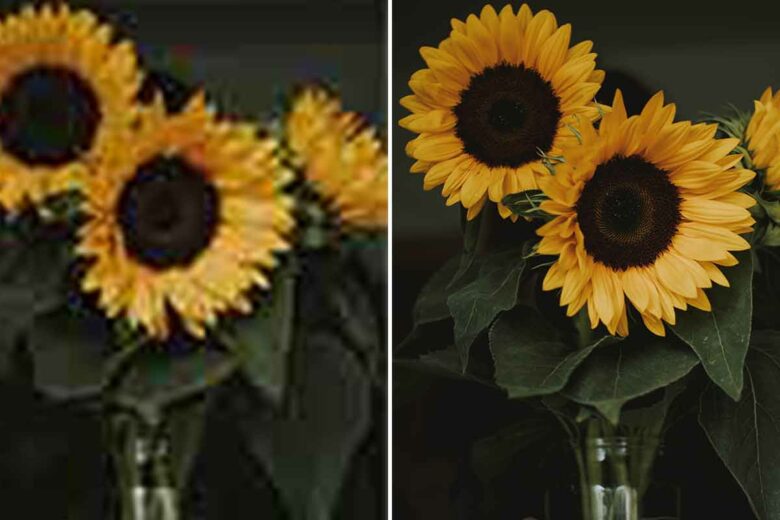
It'southward a common belief that well-nigh every image on the web is 72 ppi, and all sorts of myths explain as to why the number 72 was called to be the standard ppi for screen. The truth nevertheless is, that it doesn't actually matter what pixel density y'all apply online. The ppi value is only relevant when creating images for print. The but value that matters on screen is the actual width by height resolution of the image. For example a 200 ten 200 pixels image at 72ppi, 150ppi, and 300ppi will all display exactly the same on the web. And a 3000 x 2000 72ppi image will be much more than printable than a 300 x 200 72ppi image.
Also, almost all computer screens are now in backlog of 100 ppi, not 72ppi. If y'all have a 17″ monitor, it is likely you take information technology gear up at 800 x 600 pixels, and if you lot have a 19″ screen, 1024 10 768. Yous can change the settings merely these are optimum for those screen sizes.
Some professional, high-end printers may require images to be upward to 600 ppi. Non-professional printers such as inkjet, laser, and other common printers tin print images that are at least 200 to 300 ppi and higher. Photographic prints are recommended to exist at least 300 ppi. Images for large format poster printing tin can be around 150-300ppi depending on how close the epitome will exist viewed.
Highest Resolution Possible for Images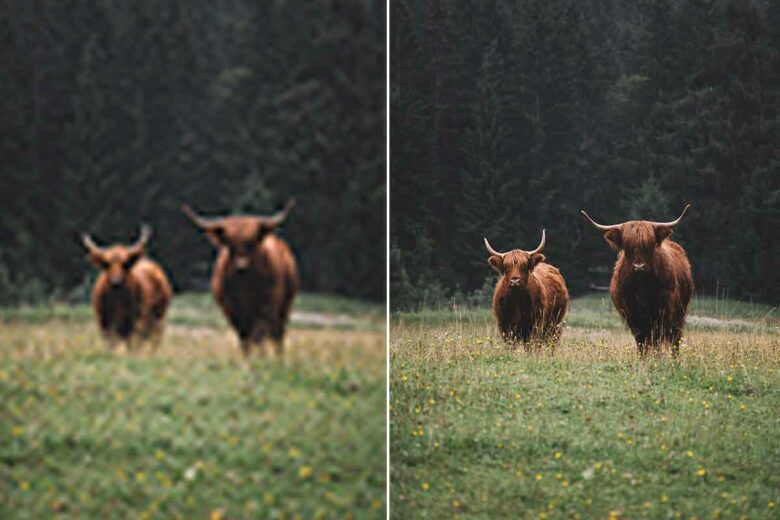
The departure between depression and high resolution determines whether your design looks fuzzy vs. crystal clear. You need the highest possible resolution or denser paradigm quality for printing and enlarging images. The lo-res images may look smashing at its normal size (100%), but when nosotros zoom in, they look blurry or pixelated, because you can distinguish each pixel.
Hi-res images are at to the lowest degree 300 pixels per inch (ppi). This resolution makes for good print quality and is pretty much a requirement for anything that y'all desire as a hard re-create.
Resolution besides helps you figure out how much you can overstate a photograph. This comes in handy when trying to figure out what size you can impress something (4×6? 8×10?) and ensure it however looks good. Rule of thumb: divide the pixel size (dimension) of the prototype past the resolution (at least 300 ppi) to get the maximum print size in inches. So, if your paradigm is two,000 pixels in length at 300 ppi, so you tin print information technology upward to six inches or then (2,000 divided past 300).
Recommended Image resolution for Designer Projects
Whether you're designing invitations for a business firm party, creating a poster for a gig, or showcasing the menu of a new French patisserie, the post-obit data should help yous design files in the right format and set for print in the right sizes. The sizes below are the press standards for posters, business concern cards, flyers, brochures, and invitations.
Posters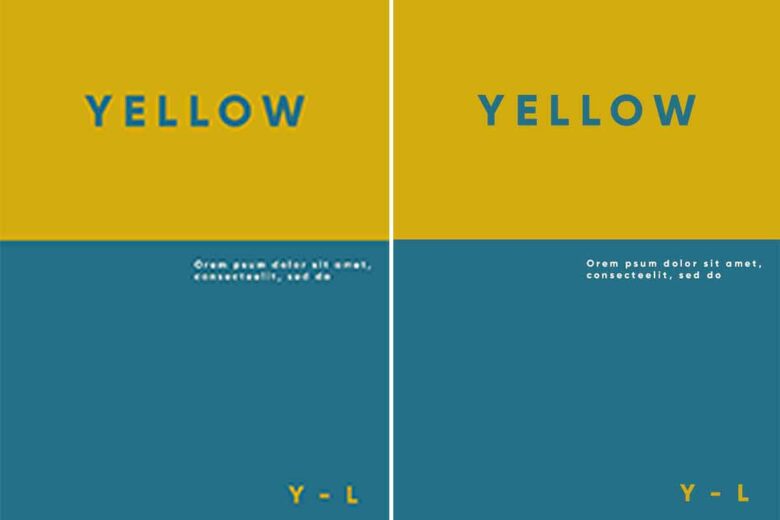
Modest posters piece of work best for bulletin boards and are used for concerts, school events, general announcements, etc. The small size does not take up much space. Tip: Endeavor using less pictures and use big, assuming letters to help you get your message across. Recommended sizes for small posters are: 11 × 17 inches and 3300 × 5100 pixels.
Medium poster size is cracking for outdoor advertising. They can exist used as advertising cloth or important announcements for outdoor events. Its bigger size allows you to include more information and also add more graphics or images. Recommended sizes for medium posters are: 18″ × 24″ and 2400 × 7200 px.
Large poster sizes are the near used in the US, for moving-picture show posters, trade shows, and decorating. They are corking for showing large images and lots of data. Tip: Combine different font sizes and color palettes to capture the audience's attending. Recommended sizes for large posters are: 24″ × 36″ and 7200 × 10800 px.
Flyers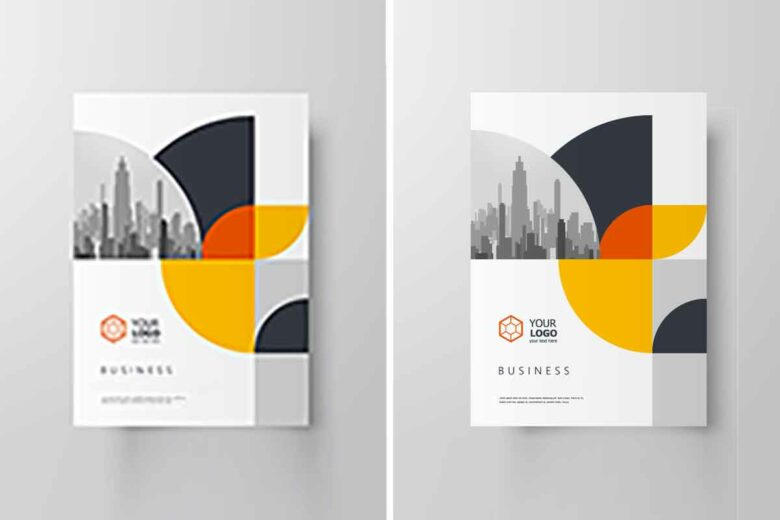
Modest flyers include only relevant information and are unremarkably used to inform most offers and discounts at stores. Recommended sizes for small flyers are: 4.25″ × five.5″ and 1275 × 1650 px.
Half canvas flyers are equivalent to half a letter of the alphabet-sized sail and are great for promoting your outcome, concert, or offer with little data. Make sure to give precedence to essential information past combining different fonts and carefully chosen graphics or images. Recommended sizes for one-half sail flyers are: 5.v″ × 8.5″ and 1650 × 2550 px.
Alphabetic character flyers enable you to include a lot of information without things looking crowded. You tin can use them equally modest result posters, writing out merchandise information, or even as restaurant menus. Recommended sizes for letter flyers are: viii.5″ × 11″ and 2550 × 3300 px.
Brochures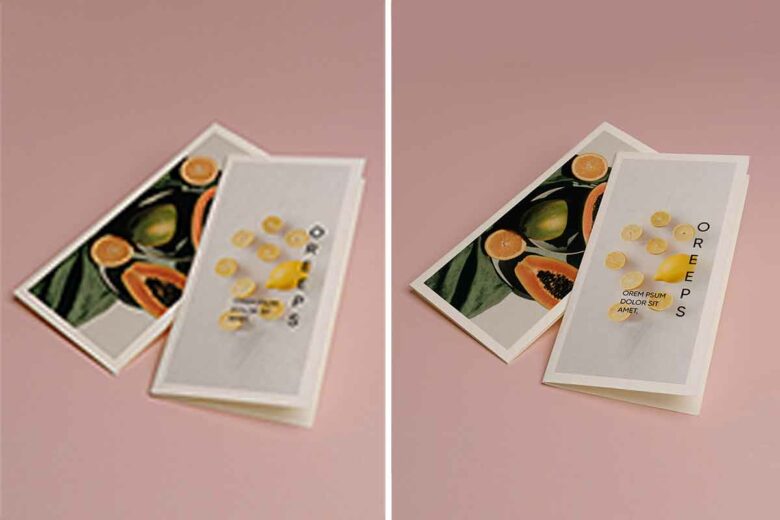
Letter of the alphabet brochure is the most common newspaper size used in printing and the i most home printers use. It gives you enough space to include a lot of information, likewise as images related to your topic. Recommended sizes for letter brochures are: 8.5″ × eleven″ and 2550 × 3300 px.
Legal brochure can be packed with lots of pictures, graphics and text near your event or product. You lot can print out a trifold brochure past folding it horizontally, only continue your audience in mind when writing the content. Recommended sizes for legal brochures are: 8.v″ x xiv″ and 2550 × 4200 px.
Tabloid brochures are perfect for printing a restaurant menu or peradventure fifty-fifty the program for a concert or play. Tip: add full size pictures and images and avert writing big chunks of text. Recommended sizes for tabloid brochures are: 11″ × 17″ and 3300 × 5100 px.
Tips for Increasing Image Size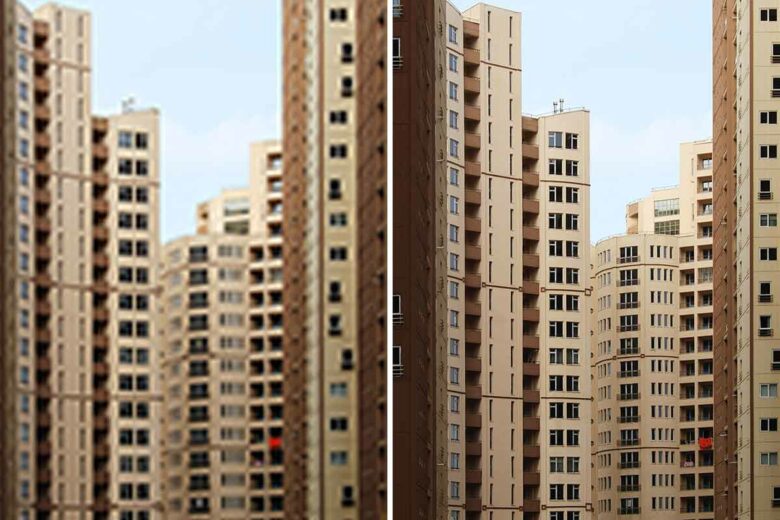
The quality of an image doesn't depend solely on college resolution. It all depends on the human relationship betwixt pixel density and image size – a change in paradigm size will alter picture resolution. You take a stock-still number of pixels in an image, so changing the physical size of the image volition change the number of pixels per inch. Increasing the image size will result in a lower DPI, meaning there are fewer pixels to make up each foursquare inch and the pixels volition become larger to fill the space. As a result, your paradigm could end upwards looking blurry and pixelated.
To avert pixilation problems, yous might desire to consider the method of interpolation when actress pixels tin be artificially created. In this process the computer analyzes the original pixels and creates new ones based on what it thinks should be there. Interpolation effectively allows you lot to increase the size of the prototype, while retaining the same DPI, thus avoiding any pixilation problems. As perfect as it sounds in theory, a figurer usually fails to produce a perfectly accurate interpretation of the missing pixels. And so, consider using interpolation sparingly.
Interpolation is also used in Photoshop to change pixel dimensions past adding or deleting pixels in a process called resampling. With Resampling turned on, y'all can gear up a new resolution without the epitome size irresolute (or vice-versa) and Photoshop will fill up in the missing pixels. Constrain Proportions will hateful that the width and elevation remain at a fixed ratio, removing the gamble of squishing or distorting your image. Resampling should, as a rule, be avoided where possible, since it affects the clarity and sharpness of the paradigm.
How to Increase the Resolution of an Epitome
With Picsart Image Upscale, you tin increase paradigm resolution in an instant, without compromising on quality. Trust your photos to Picsart Image Upscale and let AI place areas within the image that demand enhancement and improvement.
Below you will find two ways to increment resolution of paradigm on Picsart.
one) Open the Picsart app and tap on the majestic plus sign.
2) Upload the image you want to resize (or choose one from the gratis stock image libraries) and tap on Tools.
3) Tap on the Resize tool.
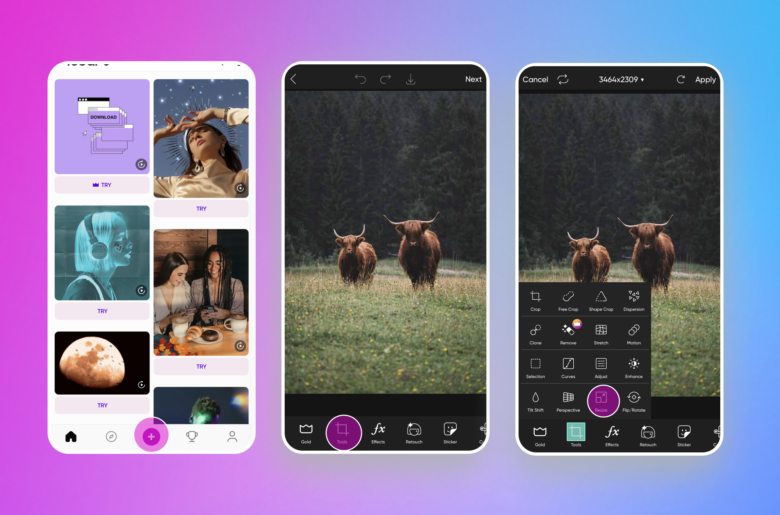
4) Input your desired width and height values and tap on Next to save or share your newly resized epitome. 
Y'all tin can as well resize images on desktop. Information technology's just equally simple.
1) Open the Picsart editing suite and select the Resize Image tool.
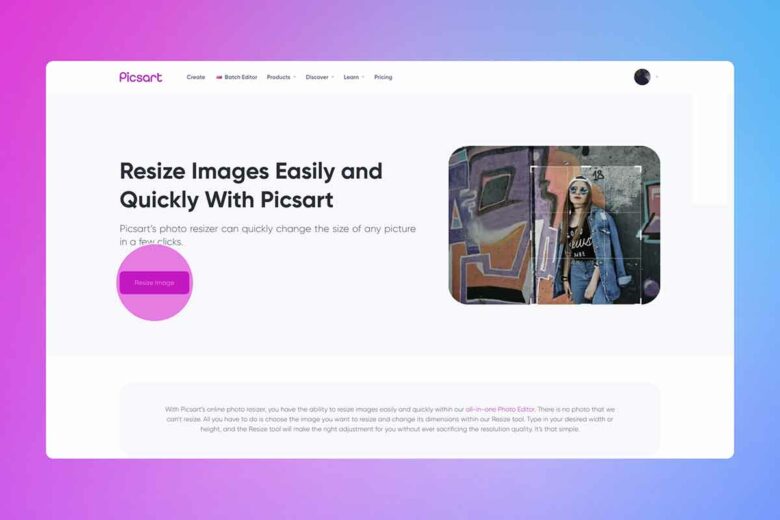
2) Upload the image you want to resize or cull from the stock libraries.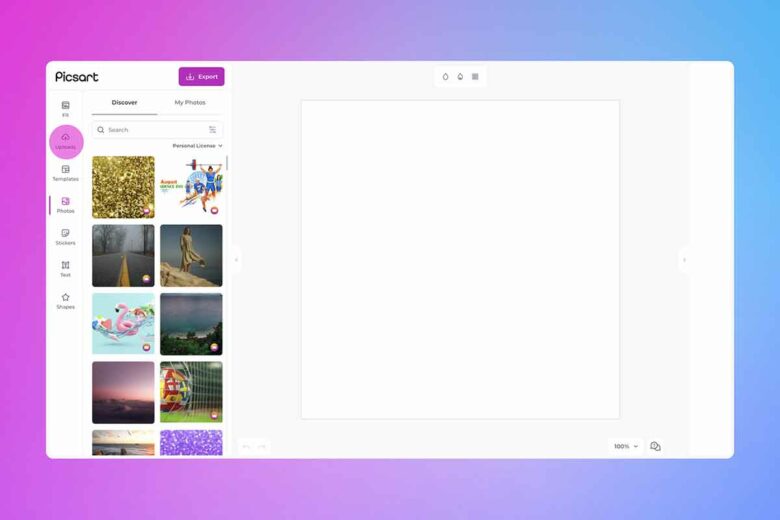
3) Using the Fit tool, input your desired new image size width and height values.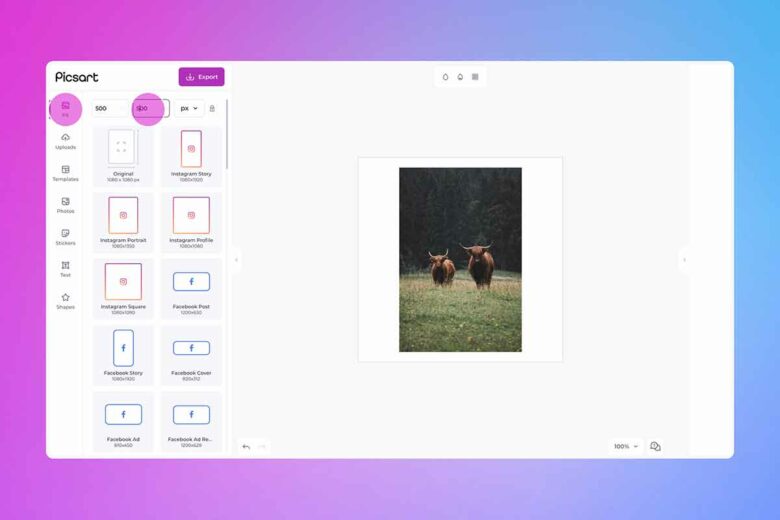
4) When you're washed, click on Export to save or share your piece of work.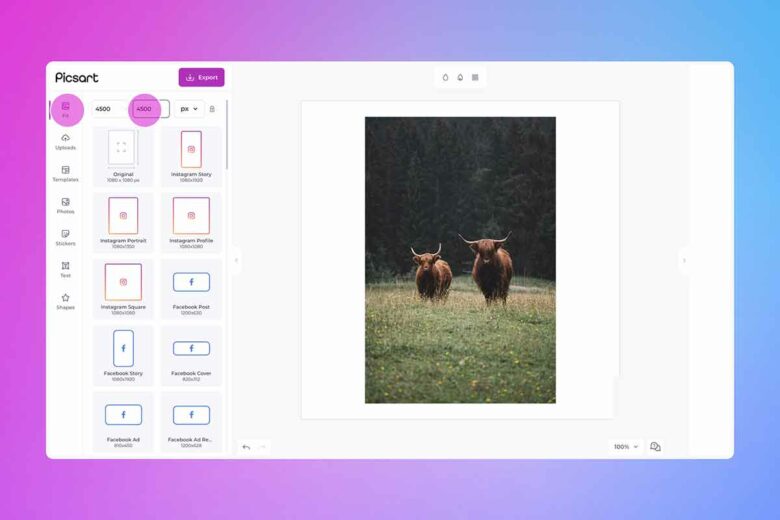
Create at the Speed of Civilisation
Picsart is a full ecosystem of gratis-to-employ content, powerful tools, and creator inspiration. With a billion downloads and more than than 150 one thousand thousand monthly active creators, Picsart is the earth's largest creative platform. Picsart has collaborated with major artists and brands like BLACKPINK, the Jonas Brothers, Lizzo, Sanrio: Howdy Kitty, I am a Voter, Bebe Rexha, Maroon 5, One Direction, Warner Bros. Amusement, iHeartMedia, Condé Nast, and more. Download the app or start editing on spider web today to heighten your photos and videos with thousands of quick and piece of cake editing tools, trendy filters, fun stickers, and vivid backgrounds. Unleash your creativity and upgrade to Golden for premium perks!
Source: https://picsart.com/blog/post/increase-resolution-image
0 Response to "Which Canvas Size in Pics Art for Printing Flyers"
Post a Comment